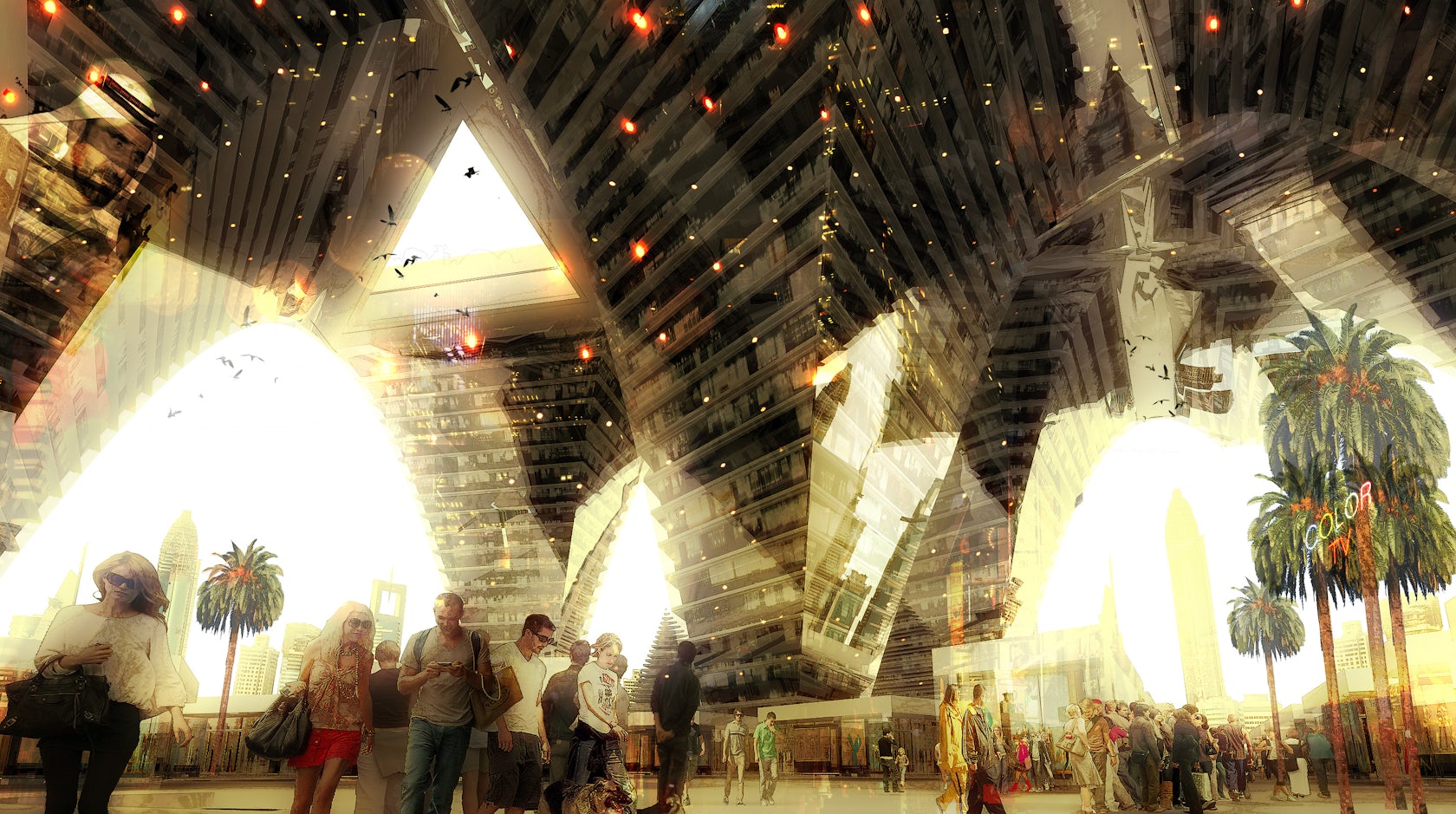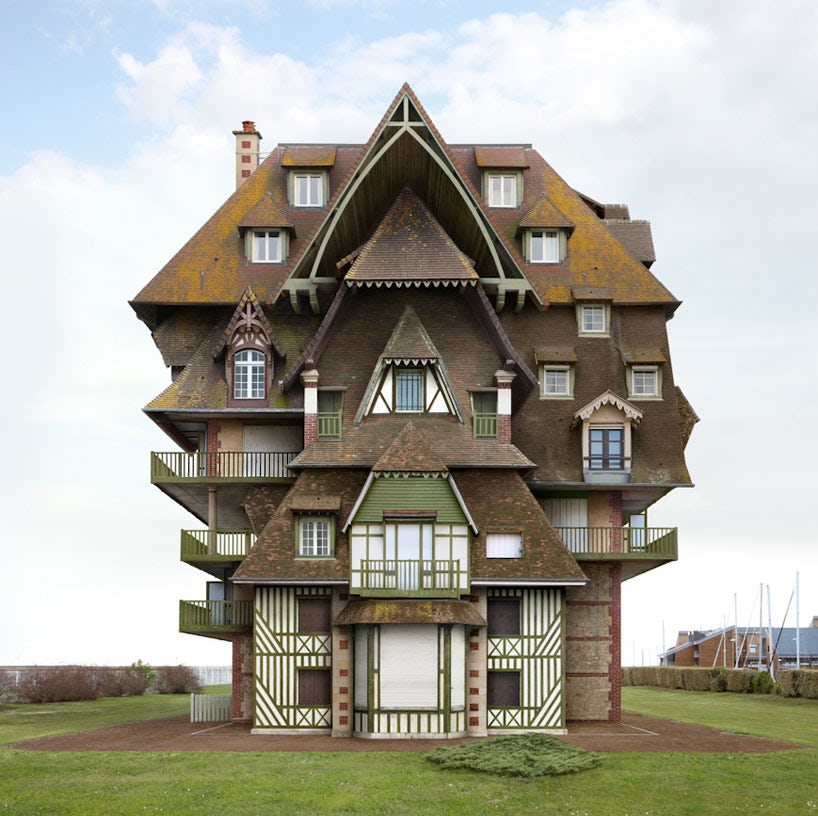Today is April Fool’s Day, which is a good opportunity to reflect on the topic of rendering as design fiction. Architectural rendering relies heavily on Photoshop to drive its narratives, as post-production allows designers to visualize worlds with insanely good-looking people riding bikes across plazas and brunching al fresco under a hazy lens flare. These patently unrealistic situations have dubious ends: They make beautiful drawings and amazing spaces, but they can mislead the public about what kind of world will actually be created by certain designs. Will the final product really be so lively? Will it actually look like that?

Five Pillars of Bawadi by BIG. Image courtesy BIG.
On the flip side of rendering’s critical-paranoid post-production is the truthfully fake. We recently spoke to Sam Jacob about this phenomenon and how it can be useful tool for students and professionals alike. “The earnestly fictional is… an attempt to expand or resurrect a whole range of other ways of representing architectural ideas and, by doing that, expand the possibilities of what architecture might be.” He claims that by sticking to realistic renderings, we limit ourselves to that language and way of making.

FAT’s Blue House in the style of Zaha Hadid. PJ Nakamura. Image courtesy Sam Jacob.
Several artists are using digital photography manipulation to create their own fictions to upend some of the boring old conventions holding architecture back. Most recently, Mattias Jung has garnered attention for his “architectural poems,” in which he takes elements of real photographs and collages them into absurd and unrealistic scenes. They do not take into account time or physics, leaving us with a mess of foliage, historic architecture, and Modernist pieces.

Image courtesy Matthias Jung

Image courtesy Matthias Jung
Filip Dujardin has been around the internet for years, but did you know he is a superb photographer of real buildings, too? He remains best known, however, for his photographic fictions, which show hyper-realistic collages of very unrealistic buildings, most of which are sited in idyllic landscapes.

Image courtesy Filip Dujardin

Image courtesy Filip Dujardin
Jim Kazajian also makes collages with outrageous buildings mashed together in terrifying ways. These new relationships between parts and types and landscapes might just be an important way to see architecture: through the lens of uninhibited invention.

Image courtesy Jim Kazajian

Image courtesy Jim Kazajian








